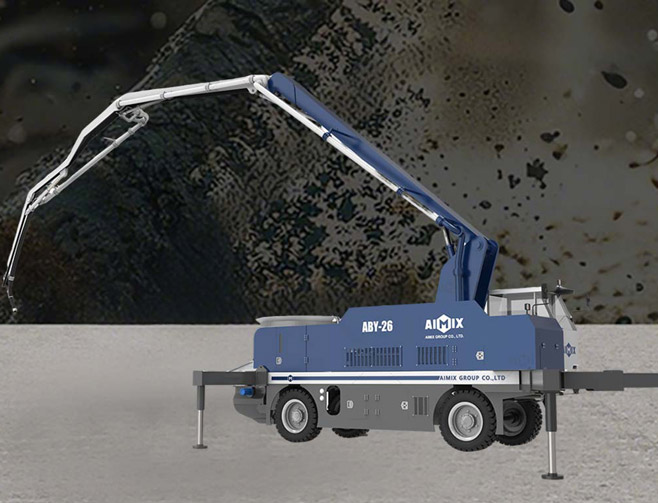Urban construction projects present unique challenges that demand specialized equipment solutions. The 20m and 26m wheeled boom concrete pump and mixer combinations have emerged as game-changing assets for contractors working in confined spaces where traditional concrete delivery methods prove impractical. These compact yet powerful machines combine the functionality of a concrete mixer with the precision placement capabilities of a boom pump concrete, creating an all-in-one solution that streamlines operations while overcoming spatial constraints.
What sets these units apart is their remarkable balance between reach and maneuverability. Unlike larger stationary pumps that require extensive setup space, these wheeled models can operate in areas with as little as 3 meters of clearance. Their integrated design eliminates the need for separate mixer trucks and pump units, reducing both site congestion and coordination complexity. For projects in dense urban environments, historic districts with narrow access roads, or interior renovations where conventional equipment can't venture, these versatile machines are redefining what's possible in concrete placement.

Compact Dimensions with Impressive Performance
Precision Engineering for Tight Spaces
The articulated boom design of these units allows for remarkable placement accuracy in confined areas. The 20m model can fold into a transport length of under 8 meters, while the 26m version maintains a surprisingly compact footprint considering its extended reach. Both models feature multi-axis rotation capabilities that enable concrete placement around obstacles and over barriers with millimeter precision.
Power-to-Size Ratio Breakthroughs
Recent advancements in hydraulic systems have enabled these compact pumps to deliver 120m³/h pumping capacity - performance that rivals much larger concrete trailer pumps. The integrated mixer components maintain continuous material flow, preventing the segregation issues common when using separate mixing and pumping equipment. This combination of compact dimensions and full-scale performance makes these units ideal for high-rise construction in crowded city centers.
Multi-Site Adaptability and Rapid Deployment
Road-Legal Mobility Between Jobs
With all-terrain chassis configurations and weights optimized for road regulations, these units can move between urban job sites without special permits in most jurisdictions. Their self-contained nature means crews can go from transport mode to pouring concrete in under 30 minutes - a critical advantage for contractors managing multiple projects simultaneously.

Case Study: Historic District Renovation
During the restoration of a 19th-century market square in Germany, a 26m wheeled cement mixer pump with boom successfully navigated 2.8m wide access lanes to place concrete for structural reinforcements. Traditional pumps would have required partial demolition of protected facades to gain access, demonstrating how these units preserve architectural heritage while enabling modern construction techniques.
Economic Advantages Beyond Space Constraints
Labor and Time Savings
The integrated mixer-pump design eliminates the need for multiple operator crews and coordination between different equipment types. Project managers report 35-45% reductions in labor hours for concrete placement operations compared to conventional methods. The continuous mixing and pumping process also cuts waiting times between deliveries, allowing faster completion of each pour.
Reduced Ancillary Costs
These units minimize several hidden expenses common to urban projects. Their compact operation footprint means less temporary road closure expense, reduced noise barrier requirements, and lower costs for traffic management personnel. The ability to place concrete directly where needed also decreases the need for secondary redistribution using buggies or wheelbarrows - a significant savings on high-rise projects.
The 20m and 26m wheeled boom concrete pump and mixer combinations represent more than just another equipment option - they embody a fundamental shift in how contractors approach challenging urban projects. By combining compact dimensions with full-scale performance, these units solve spatial problems while delivering tangible productivity gains. As cities continue to grow denser and construction sites become more constrained, such versatile solutions will undoubtedly become standard equipment for forward-thinking contractors worldwide.